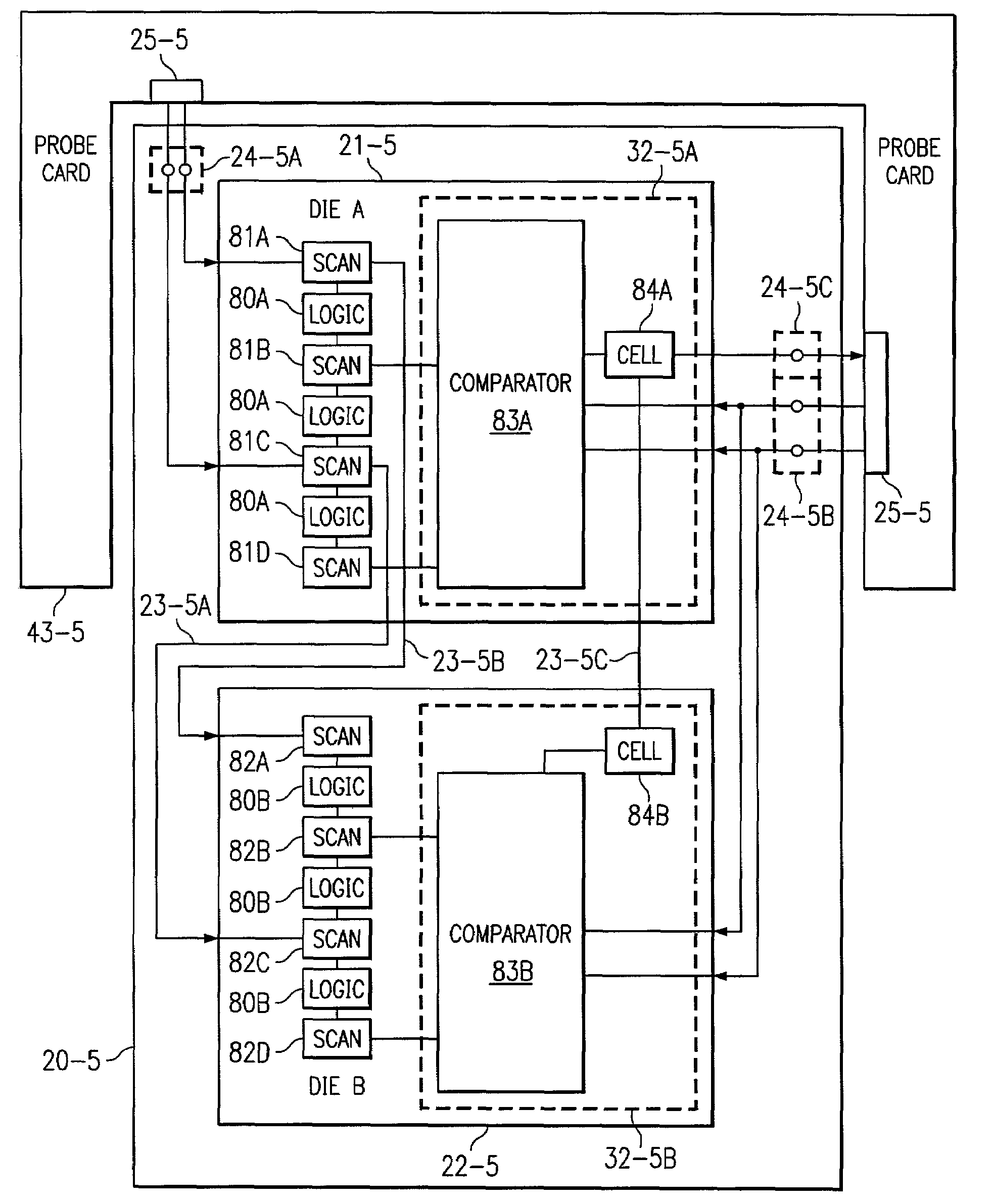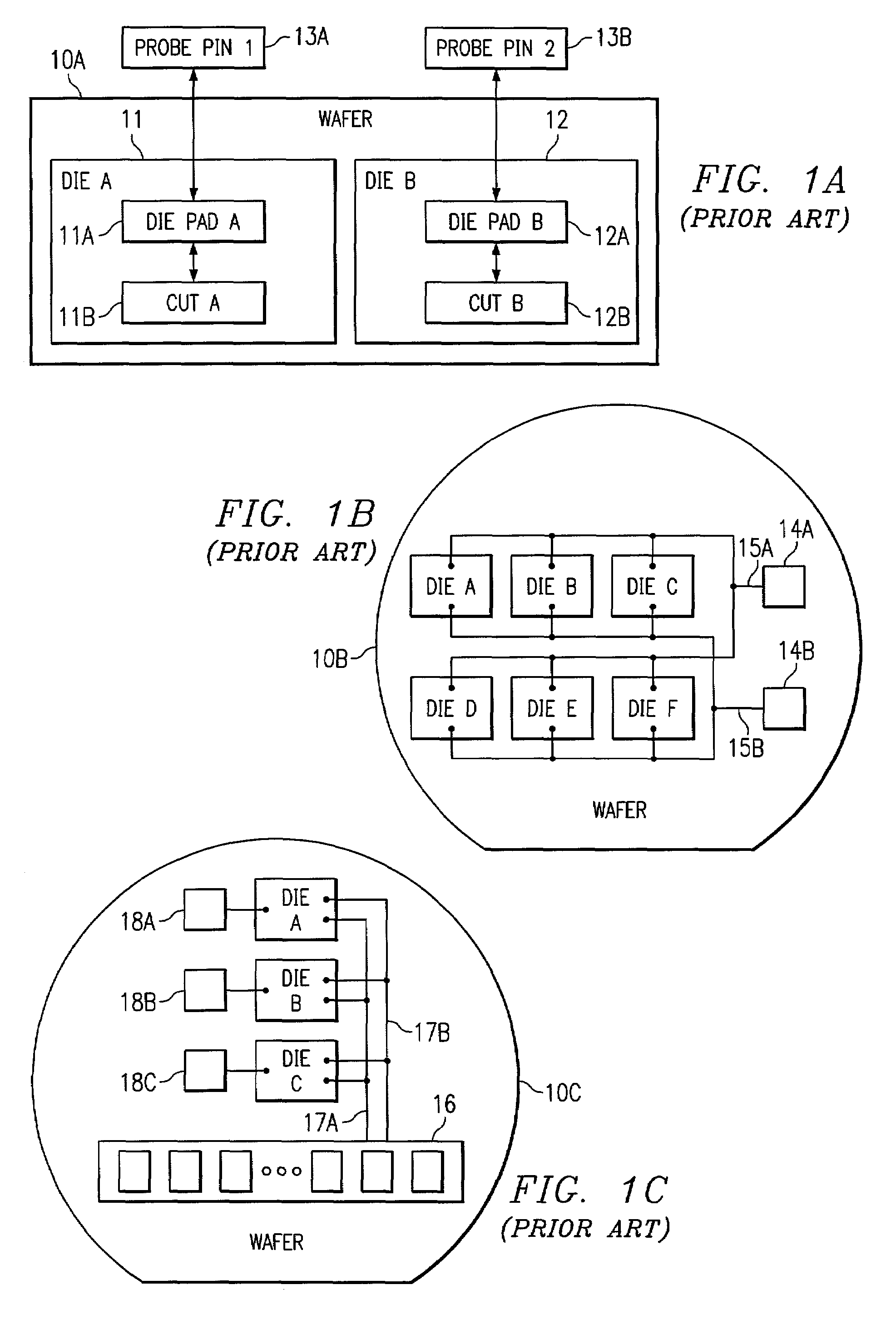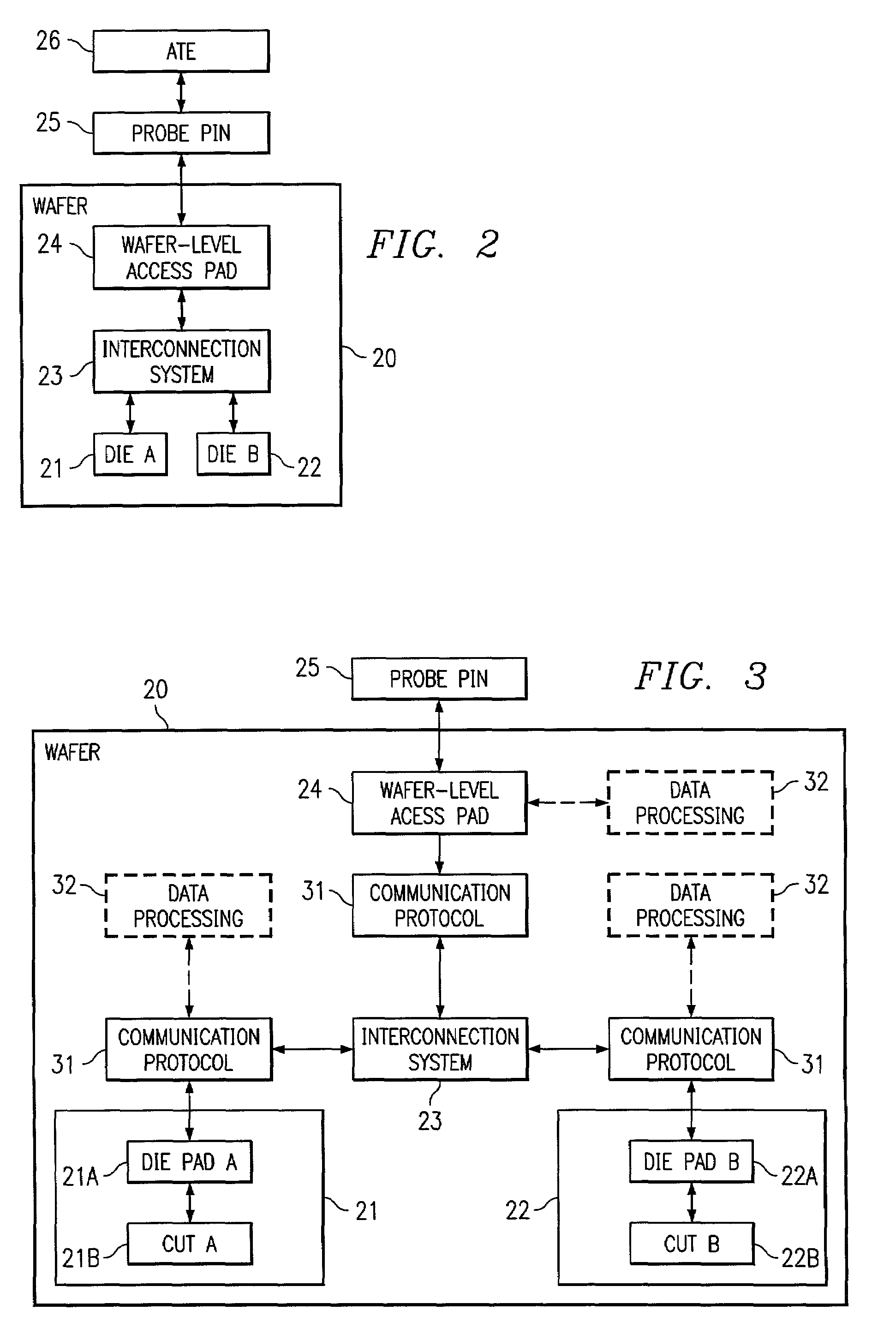System and method for testing circuitry on a wafer
- Summary
- Abstract
- Description
- Claims
- Application Information
AI Technical Summary
Benefits of technology
Problems solved by technology
Method used
Image
Examples
Embodiment Construction
[0036]Turning to FIGS. 1A-1C, example configurations of the existing art for testing dice of a semiconductor wafer are shown. FIG. 1A shows an example of a traditional testing configuration. As shown, wafer 10A comprises die A (labeled 11 in FIG. 1A) and die B (labeled 12 in FIG. 1A), which may be singulated during the singulation process (e.g., and may be packaged as an integrated circuit). Of course, wafer 10A may comprise many more than two dice, but only two are shown in FIG. 1A for simplicity. Die A includes circuitry (“CUT A”) 11B, and die B likewise includes circuitry (“CUT B”) 12B. Such circuitry may be referred to herein as the CUT of a die. Such circuitry 11B and 12B of dice A and B are typically identical, but in some manufacturing processes, differing circuitry may be included at different dice of a wafer.
[0037]Die A also includes one or more access pads 11A that are communicatively coupled to circuitry 11B, and die B likewise includes one or more access pads 12A that ar...
PUM
 Login to View More
Login to View More Abstract
Description
Claims
Application Information
 Login to View More
Login to View More - R&D
- Intellectual Property
- Life Sciences
- Materials
- Tech Scout
- Unparalleled Data Quality
- Higher Quality Content
- 60% Fewer Hallucinations
Browse by: Latest US Patents, China's latest patents, Technical Efficacy Thesaurus, Application Domain, Technology Topic, Popular Technical Reports.
© 2025 PatSnap. All rights reserved.Legal|Privacy policy|Modern Slavery Act Transparency Statement|Sitemap|About US| Contact US: help@patsnap.com



